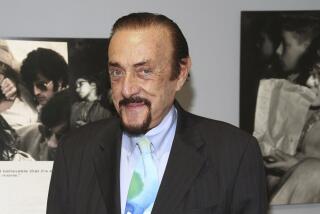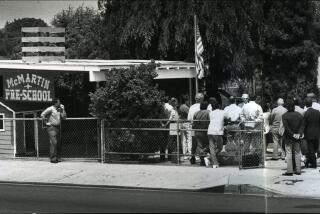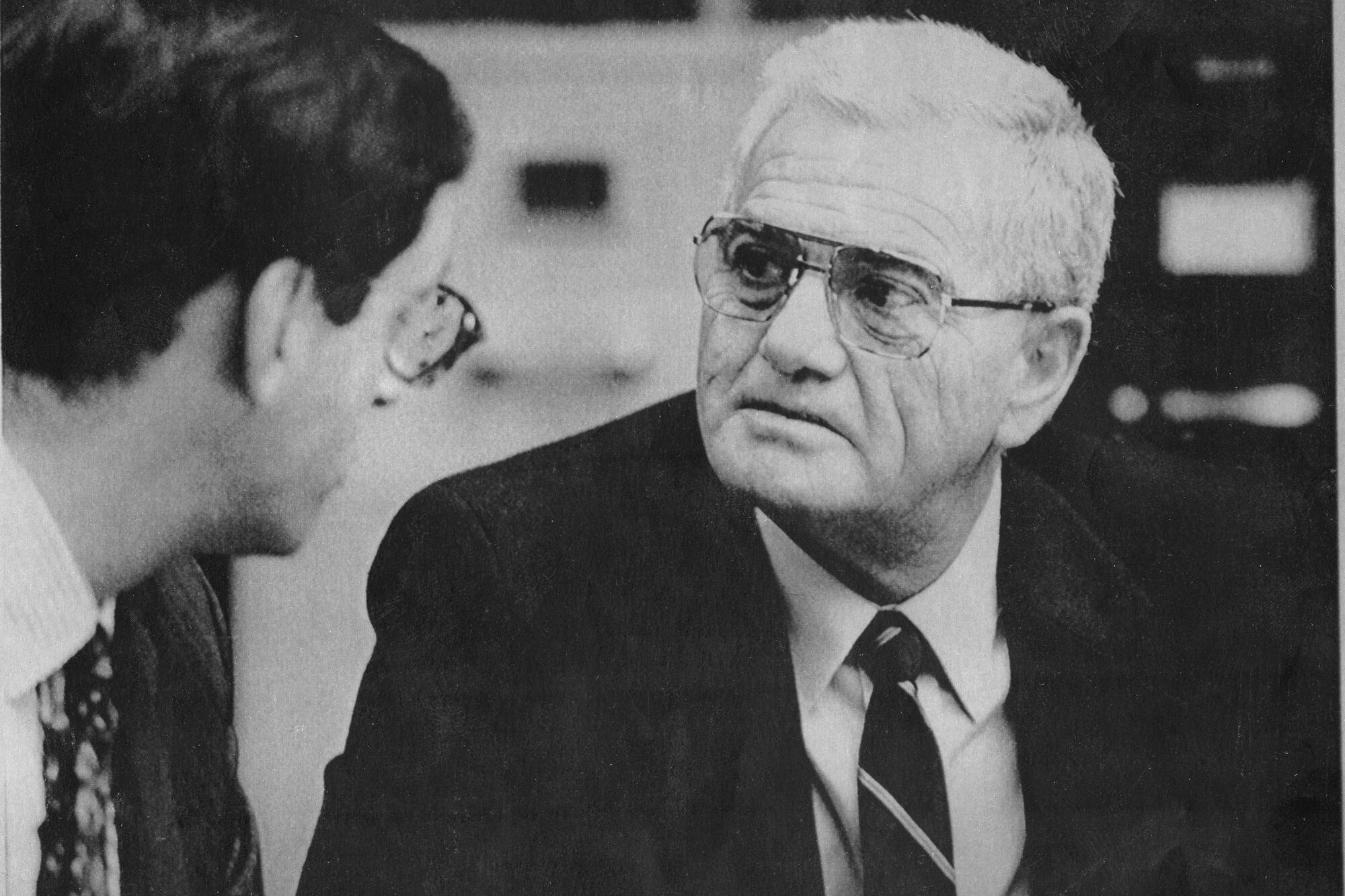
The memory of the murder, buried in her mind for 20 years, came back in a flash.
Eileen Franklin-Lipsker suddenly knew who had killed her childhood best friend, 8-year-old Susan Nason, who was abducted in September 1969 and found with her head crushed. She knew just how it had happened, and who had done it. She had been there.
The killer was my father, she said.
Detectives and prosecutors embraced her story, which became the basis of the 1990 murder trial of George Franklin, a 51-year-old retired firefighter. At stake was not just Franklin’s freedom but the validity of a trending theory about the dynamics of the mind. Was “repressed memory” — said by advocates to be a defense against trauma — a real phenomenon or the invention of misguided therapists?
In this series, Christopher Goffard revisits old crimes in Los Angeles and beyond, from the famous to the forgotten, the consequential to the obscure, diving into archives and the memories of those who were there.
Taking the stand as the government’s star witness against her father, Franklin-Lipsker claimed that for decades she had forgotten what happened to Susan, her neighbor and third-grade classmate at Foster City Elementary. It all came back unbidden, she said, as she was playing with her own daughter.
Now, she recalled being in her father’s Volkswagen van when he picked up Susan in their suburban neighborhood and drove to an isolated area. She recalled her father molesting Susan, then lifting a rock and crushing the girl’s skull. She recalled a ring on her friend’s hand being smashed as the victim tried to ward off the blow.
Police had found a ring at the crime scene, and San Mateo County prosecutors said that corroborated Franklin-Lipsker’s story. How, they asked, could she possibly know about it if she hadn’t been there?
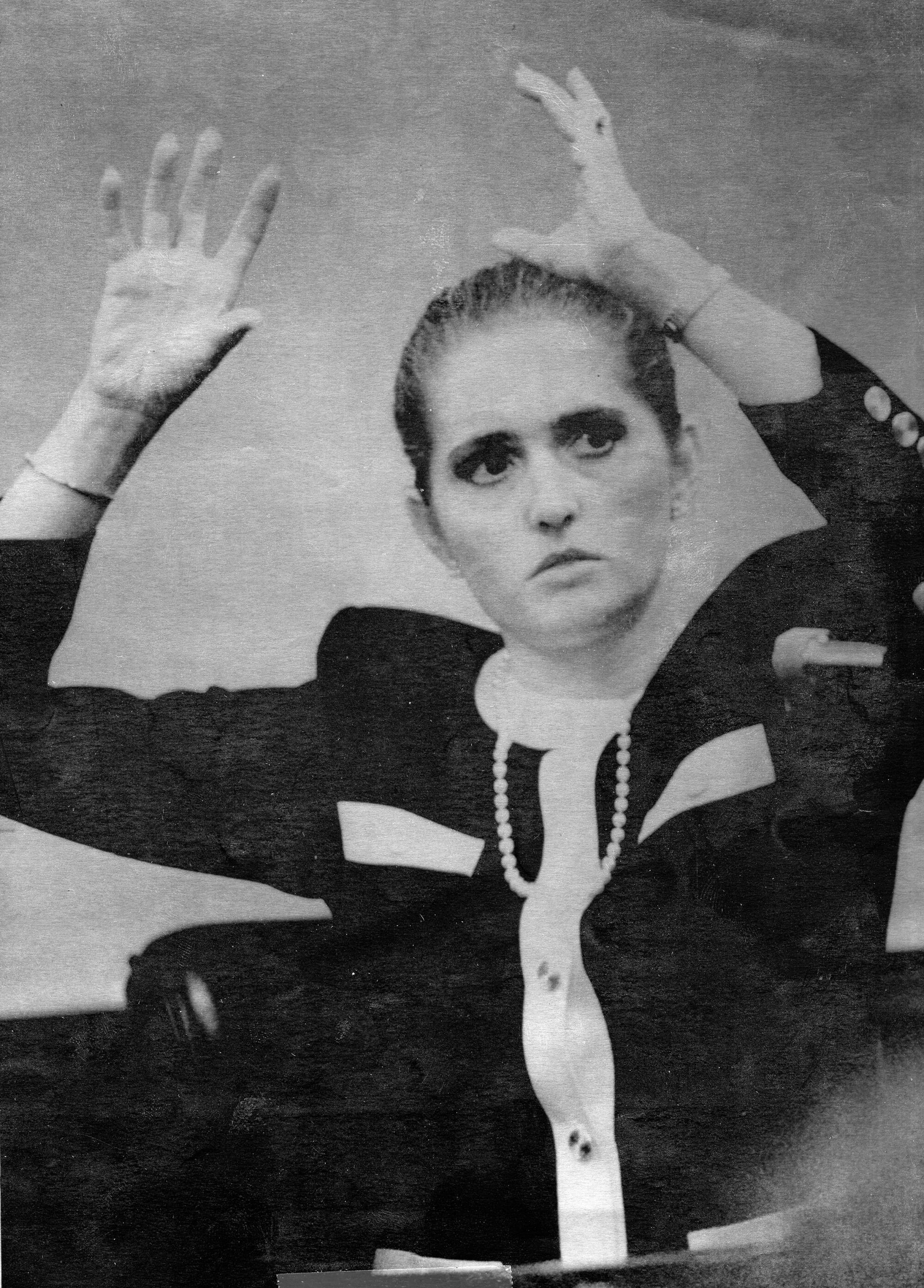
Defense attorney Douglas Horngrad had an answer, and he tried desperately to get it in front of the jury:
The San Mateo Times and other newspapers had covered the case heavily in 1969, as had TV stations, and Horngrad had compiled a package of news clippings and video proving that police had publicly discussed the ring and other details. Judge Thomas Smith, a former prosecutor himself, refused to let the jury see the news coverage.
“He knew that if he let those articles in, it would imperil the prosecution, and he didn’t want to do that,” Horngrad told The Times in a recent interview.
The defendant — stone-faced, craggy-featured and seemingly emotionless — was hard to sympathize with. He could not furnish an alibi. And testimony from Franklin-Lipsker and her sister painted him as a violent, sexually abusive alcoholic.
Franklin-Lipsker’s story shifted and changed. In one account, her sister Janice had been in the van; in another, she wasn’t. The murder was in the morning, then in the late afternoon. But the contradictions did not cause jurors to disbelieve her, said Harry MacLean, who wrote about the case in the book “Once Upon a Time: A True Story of Memory, Murder and the Law.”
“The problem was, the jury sat there and took that as evidence of how damaged she was from having George Franklin as a father,” MacLean said. “It was making her more sympathetic.”
No physical evidence ever linked Franklin to the scene, but the jury convicted him of first-degree murder.
“George Franklin was an offensive human being,” MacLean said, adding that jurors he’d interviewed were able to rationalize the verdict by saying: “If he didn’t kill Susan Nason, he did enough other stuff that he needs to pay.”
Calling him “a depraved and wicked man,” the judge sentenced Franklin to life in prison and said he regretted he could not send him to death row.

“Looking at it from 30,000 feet, the whole case was very much a creature of the times. The whole explosion in child sexual abuse had a huge impact in the culture,” MacLean said.
When Franklin was charged, the McMartin preschool molestation case — which alleged Satanic ritual abuse on a massive scale — was still slogging through the Los Angeles courts, en route to zero convictions.
The Franklin case was “the first of the recovered memory persecutions,” said Richard Ofshe, a professor emeritus of social psychology at UC Berkeley and coauthor of “Making Monsters: False Memories, Psychotherapy, and Sexual Hysteria.”
“It is absolutely Middle Ages voodoo,” Ofshe said. “It’s just mythology. There was a time when that stuff was really popular. It was the major psychiatric quackery of our time.”
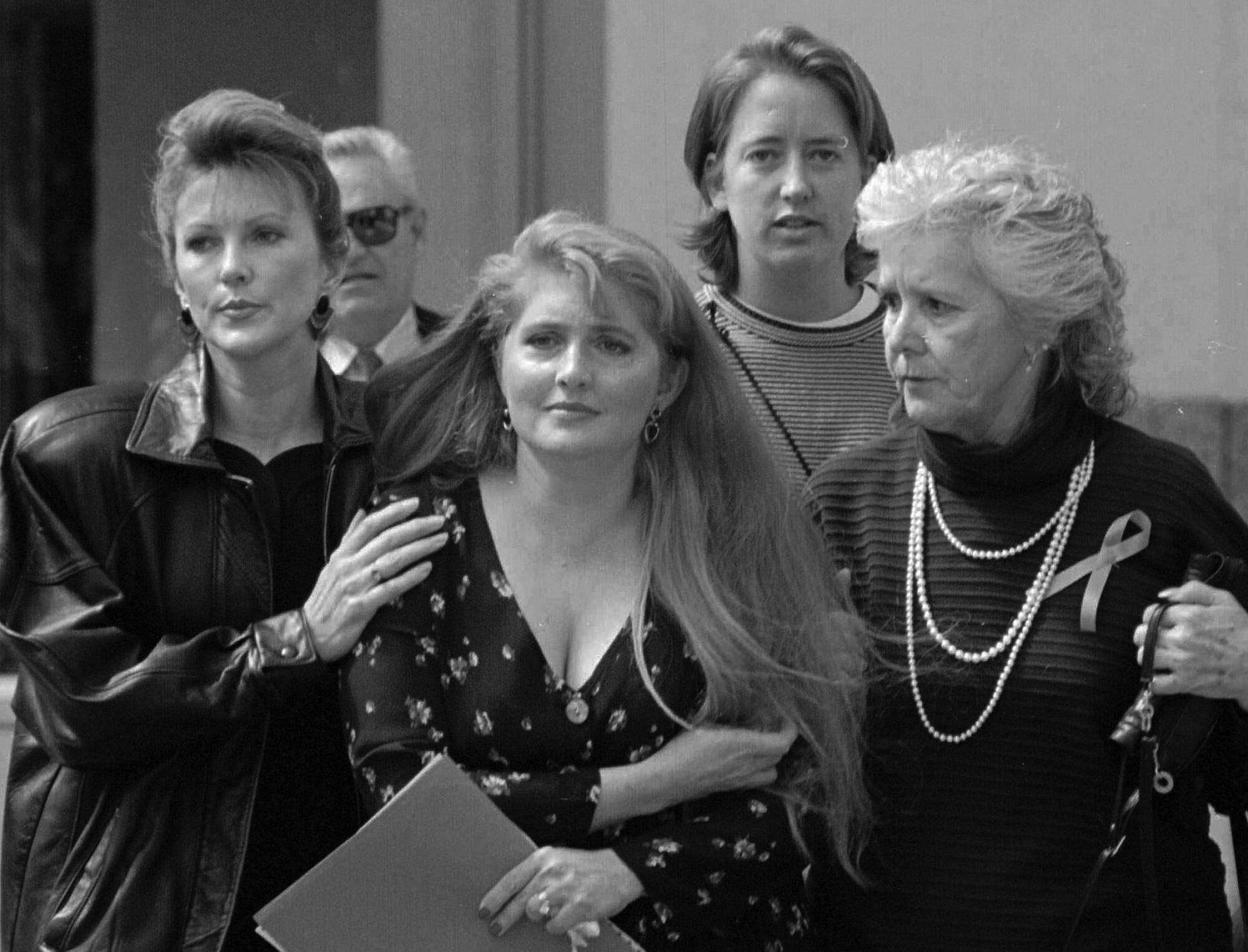
Some therapists promoted the notion that a person’s emotional troubles were conveniently traceable to an unremembered trauma.
“These quacks would tell them, ‘The reason your life is in disarray is you suffered a trauma that you’ve repressed, and we need to get to the root of it,’” Ofshe said.
At the time, a popular book was “The Courage to Heal: A Guide for Women Survivors of Child Sexual Abuse” by Ellen Bass and Laura Davis. Among its controversial lines: “If you are unable to remember any specific instances [of abuse] but still have a feeling that something abusive happened to you, it probably did.”
The Franklin case proved pivotal in the career of Elizabeth Loftus, a memory scientist who would become one of the most frequently cited and influential researchers in the field of psychology.
Loftus regarded so-called recovered memories as concoctions “spun not from solid facts but from the vaporous breezes of wishes, dreams, fears, desires.”

If you have information on old crimes, famous, once-famous or obscure, contact [email protected]
She had testified as an expert for Franklin’s defense team, and said she found the courtroom “awash in credulity” about “the mythic powers of repression.”
At the time, her research showed that the specifics of real memories could be altered, but not that “you could plant an entire rich and detailed memory” of
the kind Franklin-Lipsker seemed to possess, Loftus told The Times in a recent interview.
Fueled by the Franklin case, Loftus designed a false-memory experiment: In it, researchers reminded participants of three real events from their childhoods — the stories having been obtained from older relatives — and added a fake fourth story, telling subjects they’d gotten lost in a mall as children and were rescued by an elderly woman.

A full 25% in the study developed partial or complete “memories” of the made-up event. Loftus and other researchers have since succeeded in implanting subjects with false memories of near-drownings, dog attacks and other events that had never happened.
“There’s now a decent-sized literature on how far you can go in planting memories,” Loftus said. “That, I would say, is one benefit that directly flowed from the Franklin case.”
::
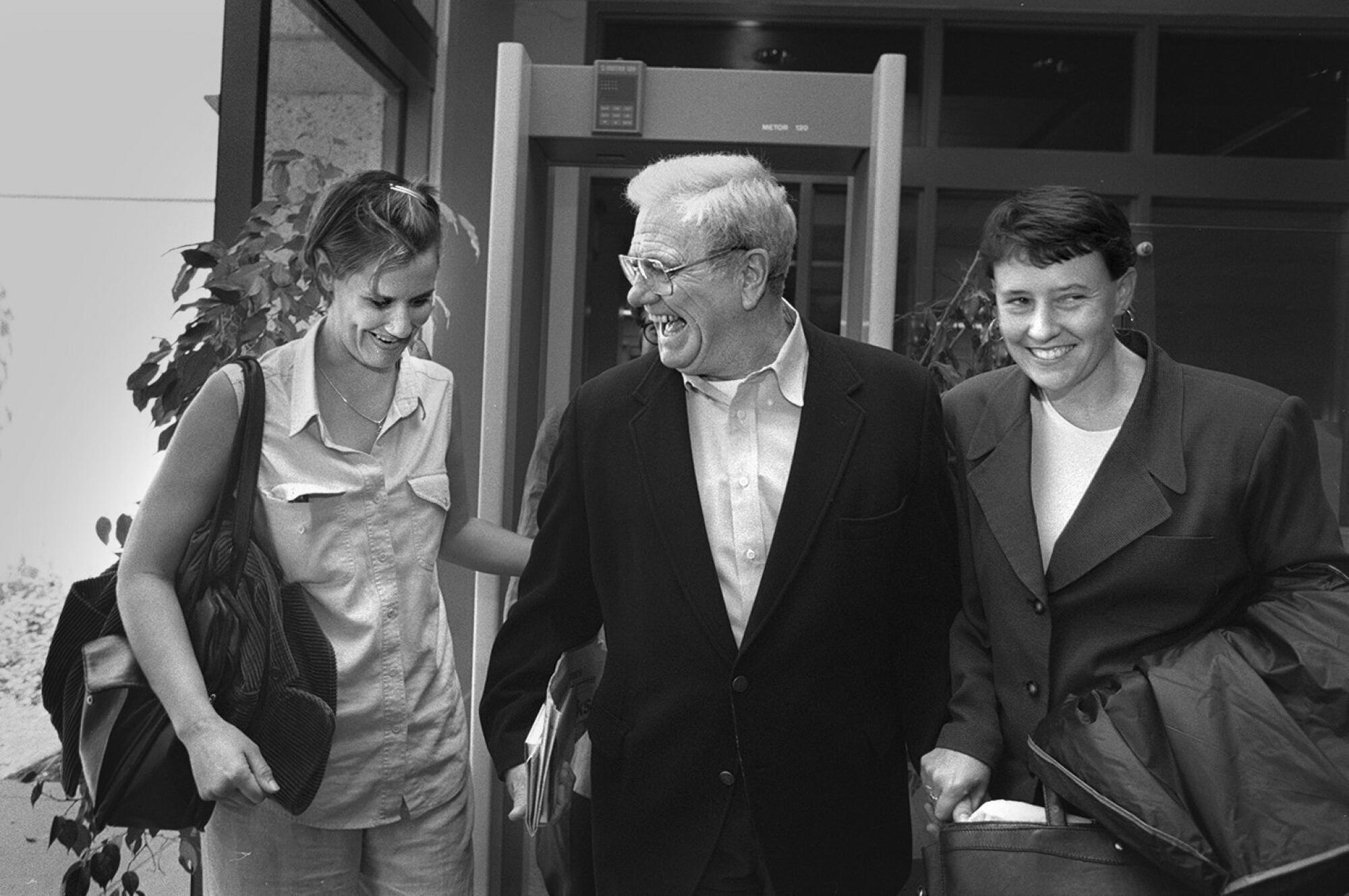
Eileen Franklin-Lipsker got a book deal. She appeared on “The Oprah Winfrey Show” and “Donahue.” Shelley Long, of “Cheers” fame, played her in a TV movie.
But in 1995, a federal judge reversed her father’s conviction, citing flaws in the case — among them, that the news footage had been kept from jurors.
The case disintegrated as prosecutors prepared to retry it. Franklin-Lipsker’s mother, once a government witness, had come to doubt her daughter’s story.
And Janice Franklin now said she and her sister had both been hypnotized to enhance their supposed recollections, and had both lied in court when they denied it. Janice said her sister knew that hypnotically induced testimony was inadmissible by law.
Franklin-Lipsker further damaged her own credibility when she told police that she recalled her father committing another murder, in 1976. This time, George Franklin had a solid alibi — he was at a union meeting — and DNA evidence excluded him. (Another man was subsequently convicted in that case.)
Prosecutors decided not to risk trying Franklin a second time in Susan Nason’s slaying. After more than six years in prison, he went free.
Recovered memory cases had been “sprouting up like beanstalks,” but “once the reversal happened, everyone reanalyzed it,” Franklin’s attorney said.
“I think it’s pretty well accepted in the criminal justice system that one cannot and should not charge someone with a crime based on a ‘repressed memory’ unless there is corroboration,” Horngrad said. “No prosecutor worth their salt is going to bring a case like this.”
More to Read
Sign up for Essential California
The most important California stories and recommendations in your inbox every morning.
You may occasionally receive promotional content from the Los Angeles Times.


